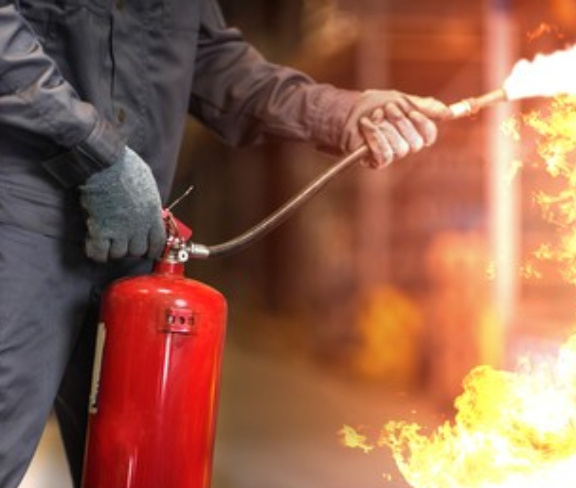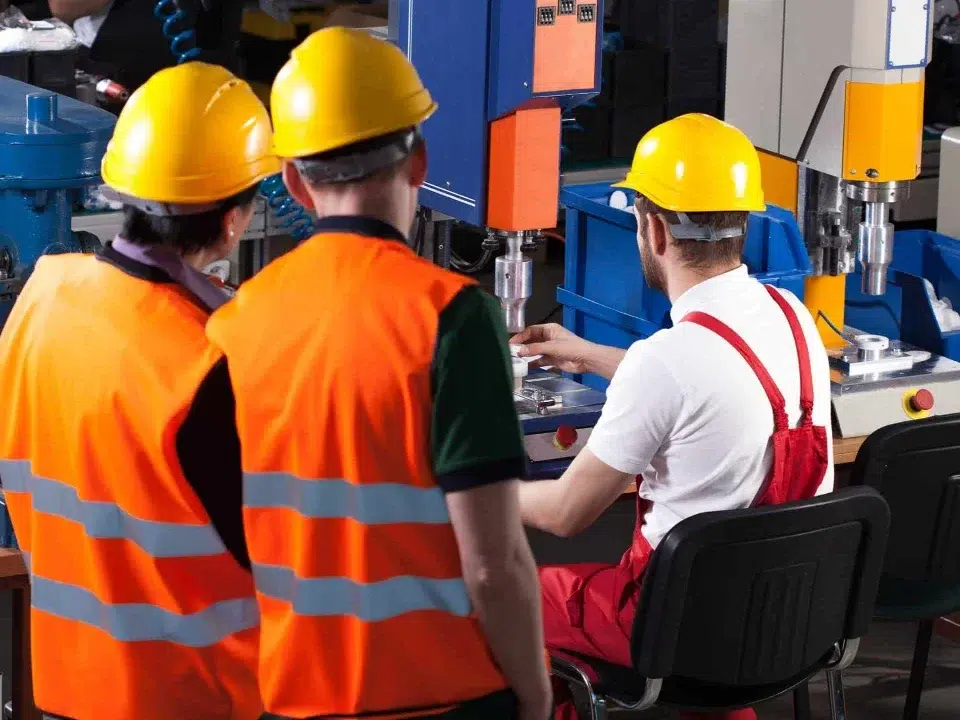Fire Load Calculation and Fire Risk Assessment

Legal EHS Requirements in India Consultancy by TheSafetyMaster
September 8, 2023
Process Safety Audit
September 11, 2023Fire is a powerful force that can cause immense devastation within seconds. Its unpredictable nature and ability to spread rapidly make it a constant threat to lives and property. This is why understanding fire load calculation and fire risk assessment is of paramount importance in today’s world. In this article, we will delve into the intricacies of these concepts, exploring their significance and providing you with valuable insights into how they can improve safety measures. Fire load calculation involves determining the amount of combustible material present within a given space or building. By quantifying this data, professionals can assess the potential for fire hazards and make informed decisions about fire prevention strategies. Furthermore, conducting a thorough fire risk assessment allows for identifying vulnerable areas and implementing appropriate precautions to mitigate the chances of fires occurring. As you read on, expect to gain a comprehensive understanding of how fire load calculation works and its role in safeguarding lives and assets. We will guide you through step-by-step processes, share real-life case studies highlighting the efficacy of these practices, and provide you with practical tools and techniques for assessing fire risk in your environment. By the end of this article, you will not only have deepened your knowledge but also be equipped with invaluable information that can help protect yourself, your loved ones, or your business from potential disaster. So let us embark on this enlightening journey together!
Understanding Fire Load Calculation and Fire Risk Assessment
In order to effectively mitigate the risk of fire incidents, it is crucial to have a deep understanding of fire load calculation and fire risk assessment. Fire load calculation refers to the process of quantifying the amount of combustible materials present in a specific area or structure, which helps determine the potential intensity and spread of a fire. This vital information aids in designing appropriate fire safety measures and ensuring compliance with safety regulations.
On the other hand, fire risk assessment involves evaluating various factors that contribute to the likelihood and consequences of a fire occurrence. It encompasses analyzing the layout, occupancy, electrical systems, ventilation, storage practices, and emergency response procedures within a given environment. By systematically assessing these elements, one can identify potential hazards, prioritize risks, and implement precautionary measures to minimize the chances of a catastrophic event.
Why Fire Load Calculation Matters
In the realm of fire safety, understanding the importance of fire load calculation is paramount. Fire load calculation refers to the process of determining the amount of combustible materials present in a given space, which directly impacts the potential severity and spread of a fire. By accurately assessing the fire load, one can better estimate how quickly and intensely a fire could propagate, allowing for more effective preventative measures and firefighting strategies.
Fire load calculation not only serves as a proactive approach to mitigate risks but also plays a critical role in determining suitable building designs, evacuation plans, and overall safety protocols. It provides vital information about the potential hazards that can arise from various materials found within an environment. By quantifying these hazards, professionals can make informed decisions about fire prevention strategies and select appropriate firefighting equipment.
Step-by-Step Guide to Fire Load Calculation
Fire load calculation is a crucial process in determining the potential hazards and risks associated with fire in a specific environment. By accurately assessing the fire load, one can evaluate the amount of combustible materials present and their potential to contribute to a fire outbreak.
The first step in conducting a fire load calculation is to identify and categorize all the combustible materials within the premises. This includes but is not limited to furniture, textiles, electronics, chemicals, and flammable liquids. It is essential to gather detailed information about these materials such as their composition, quantity, and storage conditions.
Once all combustible materials are identified, the next step involves determining their respective heat release rates. This can be done through extensive research or by consulting relevant fire codes and standards that provide data on heat release rates for different materials. The heat release rate information serves as a critical parameter for assessing the intensity of a potential fire scenario.
In addition to heat release rates, it is important to consider other factors such as ventilation conditions within the space under evaluation. Proper ventilation can affect how quickly a fire spreads and how intense it becomes. By analyzing airflow patterns and considering ventilation mechanisms like open windows or air conditioning systems, one can more accurately predict potential fire behavior.
Lastly, after gathering all necessary data regarding combustible materials and understanding ventilation dynamics, mathematical calculations are applied to estimate potential ignition scenarios and evaluate the overall severity of possible fires. This analysis enables experts in fire safety to make informed decisions on implementing preventive measures such as installing proper firefighting equipment or reorganizing storage spaces.
The step-by-step guide outlined above emphasizes precision
Assessing Fire Risk in Your Environment
When it comes to fire safety, a crucial aspect is assessing the fire risk in your environment. This step allows you to identify potential hazards and take proactive measures to mitigate them. Assessing fire risk requires a comprehensive evaluation of various factors that could contribute to the outbreak and spread of fire.
One important factor to consider is the layout and design of your space. Are there any combustible materials stored near ignition sources? Are there alternative escape routes available in case of an emergency? Additionally, the presence of flammable substances, both solid and liquid, should be carefully evaluated. Analyzing electrical systems, heating sources, and any equipment that generates heat is also vital in determining potential fire risks.
Furthermore, conducting a thorough assessment involves considering human behavior within the environment. Are employees or occupants aware of proper fire safety procedures? Are they trained on how to handle emergencies effectively? By evaluating these aspects alongside physical hazards, you can gain a holistic understanding of the fire risk present.
In conclusion, assessing fire risk in your environment allows you to take proactive measures to prevent disasters. By thoroughly examining factors such as layout design, presence of flammable substances, electrical systems, and human behavior, you can create a safer space for everyone involved. Remember: knowledge is power when it comes to preventing fires.
Factors Affecting Fire Risk
When it comes to assessing fire risk, there are several crucial factors that must be taken into account. Understanding these factors allows us to identify vulnerable areas and implement targeted fire safety measures. One of the primary factors affecting fire risk is the presence of flammable materials within a given environment. Materials such as wood, paper, fabrics, and chemicals can significantly increase the likelihood and severity of a fire outbreak. It is essential to have a thorough inventory of these materials and ensure proper storage and handling protocols are in place.
Another factor that affects fire risk is the availability of ignition sources. Electrical equipment, open flames, sparks from machinery, or even human error can act as potential igniters. Identifying and mitigating these ignition sources through proper maintenance procedures and implementing safety protocols greatly reduces the chances of a fire incident. Additionally, environmental conditions like temperature, humidity levels, ventilation systems, and even proximity to other high-risk areas play a crucial role in determining fire risk.
Essential Tools and Techniques for Fire Risk Assessment
The process of fire risk assessment requires a careful selection of tools and techniques to accurately evaluate potential hazards. One vital tool is the smoke detector, which acts as an early warning system by detecting smoke particles in the air. It is crucial to ensure that these detectors are installed strategically throughout the premises, especially in areas prone to fire hazards.
In addition to smoke detectors, thermal imaging cameras play a critical role in effective fire risk assessment. These cameras use infrared technology to capture images that highlight temperature variations, allowing trained professionals to identify potential hotspots or overheating equipment that may lead to fires. By swiftly detecting these anomalies, proactive measures can be taken before any significant damage or danger arises.
Furthermore, advanced computer modeling software has revolutionized fire risk assessments. These sophisticated programs simulate various scenarios and predict how fires may spread based on factors such as building materials, ventilation systems, and occupancy levels. By utilizing such software, experts can make informed decisions regarding evacuation plans, fire suppression systems placement, and overall building design modifications.
Implementing Fire Safety Measures Based on Risk Assessment
Once you have conducted a thorough fire risk assessment using the method of fire load calculation, it is crucial to implement appropriate fire safety measures. This step ensures that your environment becomes a safe haven, protected against the devastating consequences of fires.
Based on the findings of your risk assessment, it is essential to prioritize and address the areas with the highest fire risk first. This may include ensuring proper storage and handling of flammable materials, installing effective fire suppression systems, implementing robust evacuation plans, and providing adequate training to all occupants.
By taking swift action on your risk assessment results, you can significantly reduce the probability and severity of fires. Remember that prevention is key in maintaining a safe environment. Through proactive measures and regular reviews of your fire safety protocols, you can create a space where both residents and employees feel secure.
Real-Life Case Studies: The Power of Fire Load Calculation and Risk Assessment
Real-life case studies serve as powerful testimonies to the transformative impact of fire load calculation and risk assessment in improving safety measures. One such case involved a large warehouse facility that had been plagued by frequent fires, leading to substantial property damage and endangering the lives of employees. By implementing a thorough fire load calculation, experts were able to identify high-risk areas within the facility, including storage units with excessive flammable materials.
With this knowledge, a comprehensive risk assessment was conducted, taking into account factors such as evacuation routes, firefighting equipment accessibility, and potential ignition sources. Based on the findings, strategic changes were implemented: hazardous materials were relocated to designated storage areas equipped with fire-resistant containers and sprinkler systems, emergency exit signage was improved for better visibility, and staff underwent rigorous fire safety training.
Key Benefits of Utilizing Fire Load Calculation and Risk Assessment
Implementing fire load calculation and risk assessment methods not only allows for a comprehensive understanding of potential fire hazards, but it also offers a multitude of benefits that can positively impact safety measures. By carefully evaluating the fire load within a given environment, one can effectively determine the amount of combustible material present, thus enabling informed decision-making regarding fire prevention strategies.
With accurate fire load calculations, safety professionals can identify high-risk areas and implement targeted measures to mitigate potential fire incidents. Fire risk assessment further enhances this process by analyzing various factors that contribute to the likelihood and severity of a fire occurrence. Through these assessments, organizations can develop customized strategies that address specific vulnerabilities and prioritize resources accordingly.
This proactive approach not only safeguards lives and property but also fosters peace of mind knowing that comprehensive safety measures are in place. Moreover, utilizing fire load calculation and risk assessment facilitates compliance with regulatory requirements which is critical for businesses in ensuring legal adherence.
In conclusion, incorporating fire load calculation techniques alongside detailed risk assessments holds immense benefits in preventing fires before they occur. By doing so, individuals and organizations take significant strides towards creating safer environments with optimized emergency response protocols. Remember, being prepared is the key to avoiding catastrophic outcomes.
Inspiring Success Stories: How Fire Load Calculation Transformed Safety Measures
When it comes to fire safety, the implementation of fire load calculation and risk assessment can truly be transformative. Numerous success stories serve as a testament to the significant impact these practices have had in enhancing safety measures and preventing devastating fires. In one remarkable case, a large industrial facility underwent a comprehensive fire load calculation analysis and risk assessment, leading to the identification of several critical areas of concern.
The facility management promptly implemented tailored fire safety measures based on the findings. This included improving compartmentalization, installing advanced fire suppression systems, and conducting thorough staff training programs. As a result, not only did they successfully mitigate their high-risk areas but also witnessed a substantial decrease in the number of fire incidents within their premises. The success story spread across the industry, inspiring other organizations to embrace fire load calculation and risk assessment tools with similar fervor.
Conclusion
In conclusion, Fire Load Calculation and Fire Risk Assessment are essential tools for ensuring safety and minimizing the devastating consequences of fires. By understanding the factors that contribute to fire load and conducting thorough risk assessments, individuals and organizations can proactively implement effective fire safety measures. The power of these techniques lies in their ability to not only identify potential hazards but also inspire positive change in our built environment. With the use of advanced tools and knowledge, we can create a future where fires are prevented, lives are saved, and communities thrive in secure environments. Applying these methods will undoubtedly contribute to a safer world for generations to come.




